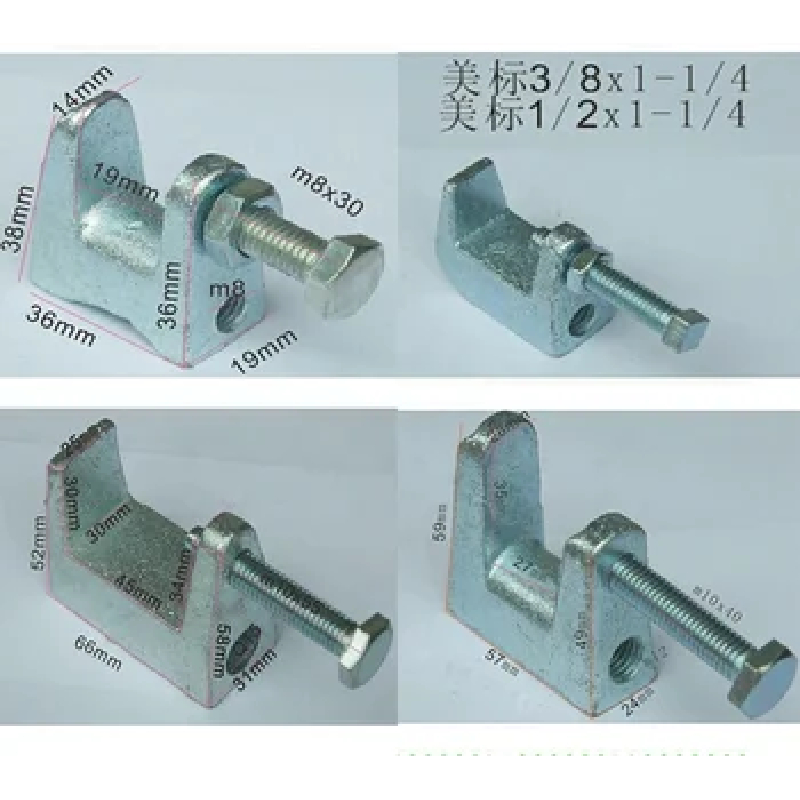Lis . 26, 2024 01:32 Back to list
Exploring the Benefits of Threaded Studding in Modern Construction Techniques
The Importance of Threaded Studding in Modern Engineering
In the ever-evolving landscape of engineering and construction, one component that has continually gained importance is threaded studding. Threaded studding, typically comprised of cylindrical metal rods with threads on both ends, plays a crucial role in connecting various structural elements, ensuring stability, strength, and versatility in engineering applications. This article delves into the significance of threaded studding, its applications, materials used, and critical considerations for engineers and builders.
Understanding Threaded Studding
Threaded studding is essentially a long rod with threads on either end, designed for use in conjunction with nuts and other fasteners. Its primary function is to create robust connections that can withstand considerable forces and loads. Threaded studding comes in various diameters and lengths, making it adaptable to numerous applications, from simple structures to complex machinery.
Applications in Various Industries
Threaded studding is utilized across a multitude of industries, including construction, manufacturing, automotive, and aerospace. In construction, it serves as a vital connection point for beams, columns, and trusses, providing the necessary tensile strength required to support heavy loads. In manufacturing, threaded studs are often used in machinery and equipment assembly, where they facilitate easy disassembly and reassembly.
In the automotive industry, threaded studding is integral to engine assembly and other critical components that require secure fastening to withstand vibrations and stresses. Furthermore, in the aerospace sector, these components contribute to the integrity of aircraft structures, ensuring that each part is anchored securely, thus enhancing safety and performance.
Materials Used in Threaded Studding
threaded studding

The choice of material for threaded studding is paramount to the performance and durability of the final assembly. Common materials include carbon steel, stainless steel, and alloyed metals. Carbon steel, known for its strength and ductility, is often used for general-purpose applications. Stainless steel, on the other hand, offers excellent corrosion resistance, making it suitable for environments exposed to moisture and chemicals.
In high-stress applications, alloyed metals may be employed for their enhanced mechanical properties. In addition to strength, factors such as temperature resistance and fatigue performance also play a significant role in material selection for threaded studding.
Key Considerations for Engineers
When selecting and designing with threaded studding, engineers must consider several factors to ensure the safety and efficacy of their projects. The load-bearing capacity is paramount; it is crucial to evaluate the tensile and shear strengths of the chosen studding based on the expected loads. Additionally, the environment in which the studding will be used must be considered—it may be exposed to corrosive elements, extreme temperatures, or vibrations, thereby necessitating specific material properties.
Proper installation techniques also play a critical role in the effectiveness of threaded studding. The use of appropriate torque settings for nuts and washers is essential to ensure that connections are secure and that the risk of joint failure is minimized. Engineers should also take into account factors such as the potential for galvanic corrosion when different metals are used in conjunction with threaded studding.
Conclusion
In conclusion, threaded studding is an indispensable component in modern engineering, providing vital connections across numerous applications and industries. Its ability to offer strength, versatility, and reliability makes it a fundamental element in structural and mechanical assemblies. By understanding the material selection, application requirements, and installation techniques, engineers and builders can harness the full potential of threaded studding, contributing to the safety and efficiency of their projects. As industries continue to innovate and evolve, the importance of robust and reliable fastening solutions like threaded studding will undoubtedly remain paramount.


